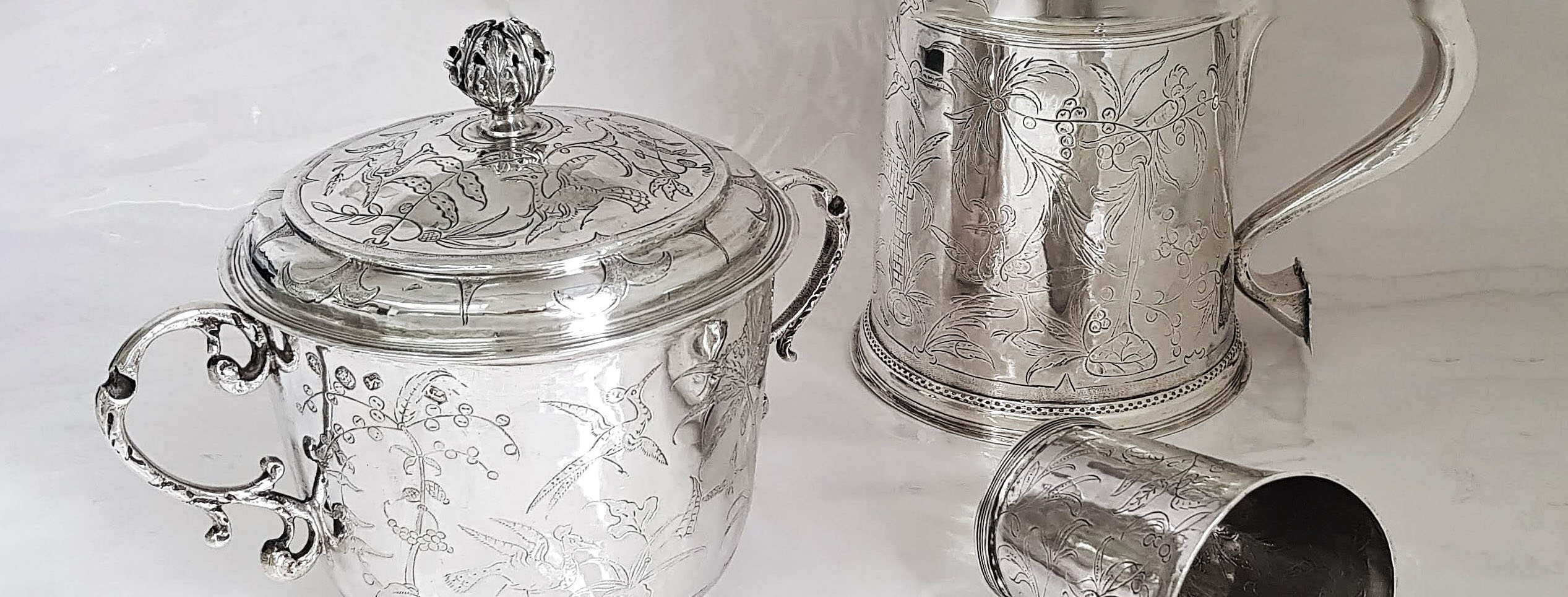Flat chased silver “in the Chinese taste” is a very satisfying collecting field and these delightful pieces of early silver make a very attractive display. The popularity of Chinoiserie emerged in the late 17th century as Europe became fascinated with the exotic East. Silverware of normal European forms was decorated with charming scenes representing Chinamen, birds and Chinese landscapes. The attraction of this silverware has continued in popularity across the centuries with many developments in the chinoiserie style decoration.
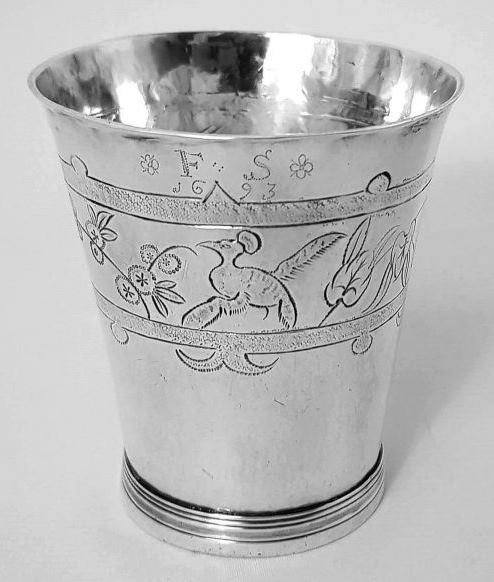

17th Century
Chinoiserie silver enjoyed a brief period of remarkable popularity from the 1670’s to the early Queen Anne period. The concentration of nearly all surviving examples within this clearly defined period, and the similarity of flat chased decoration on objects bearing different makers marks, point to a specialist workshop not yet identified, to which silver was sent by goldsmiths or their customers for decoration. This enchanting decoration of Chinese figures, birds, foliage etc. from this early period is rarely found and adds considerably to the piece.
Silver Beaker by John Robinson London 1692
Silver Box/Inkstand by Isaac Dighton London 1682
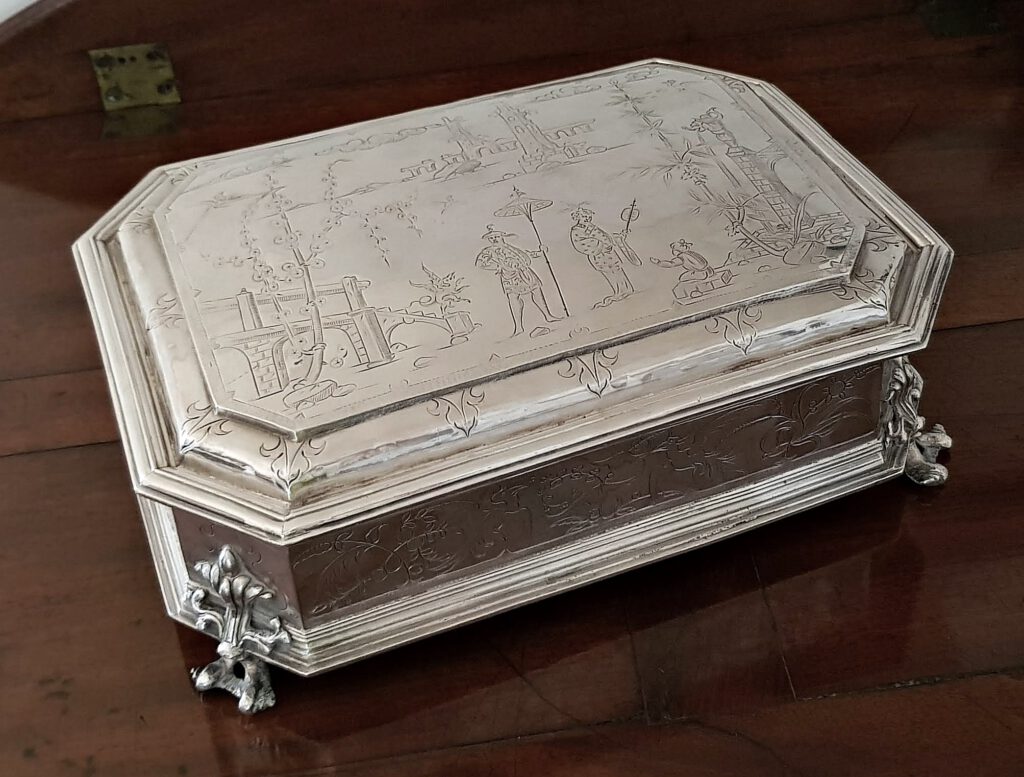

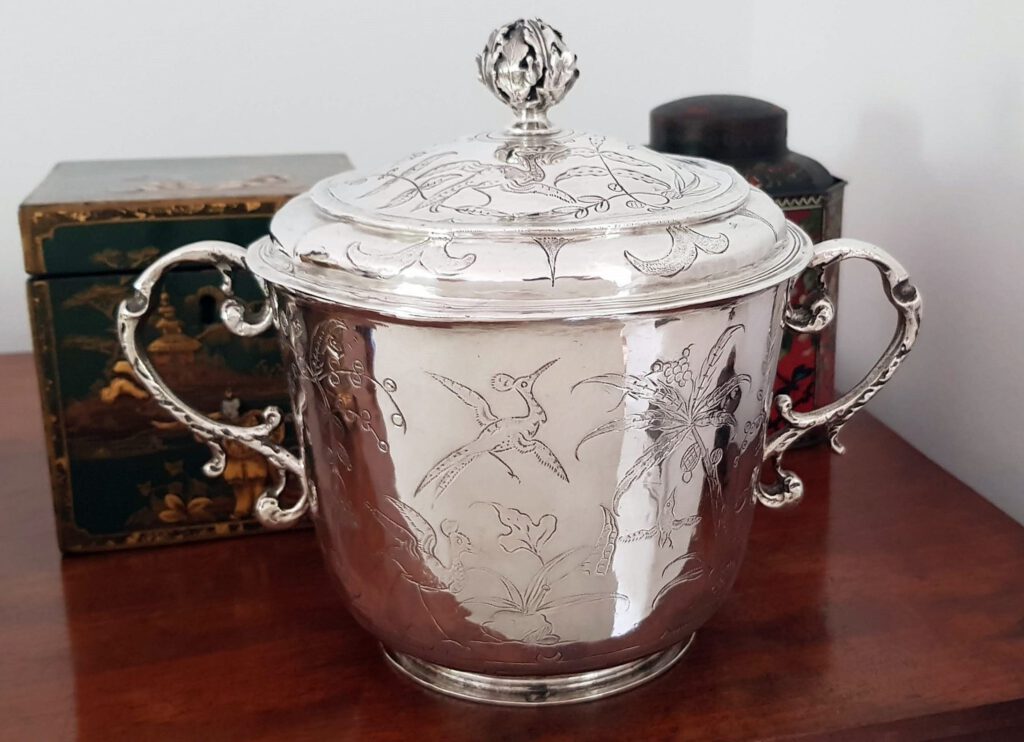

18th Century
The fascination for “China style” decoration saw a revival in the middle of the 18th century due to the rise in trade with China and the rest of East Asia. Silverware from this period was associated with the rococo style and the exuberant, deeply embossed silverware from this period is quite stunning.
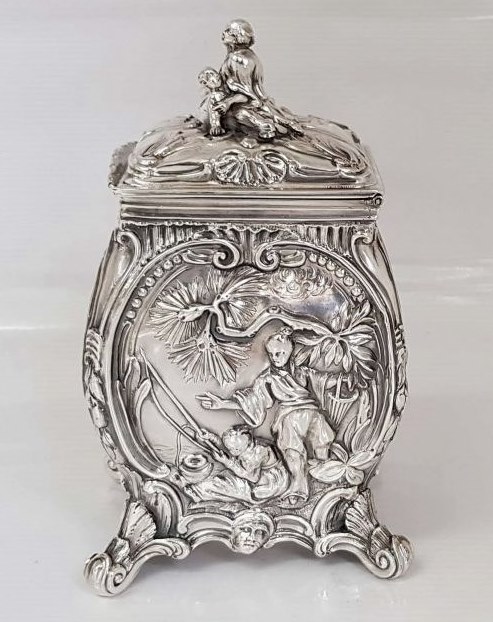

19th and 20th Century
Chinoiserie persisted into the 19th and 20th centuries but declined in popularity. There was a notable loss of interest in Chinese-inspired décor after the death in 1830 of King George IV, a great proponent of the style. The First Opium War of 1839–1842 between Britain and China disrupted trade and caused a further decline of interest in the Oriental. China closed its doors to exports and imports and for many people chinoiserie became a fashion of the past.
As British-Chinese relations stabilized towards the end of the 19th century, there was a revival of interest in chinoiserie. Prince Albert, for example, reallocated many chinoiserie works from George IV’s Royal Pavilion at Brighton to the more accessible Buckingham Palace. Chinoiserie served to remind Britain of its former colonial glory that was rapidly fading with the modern era.
